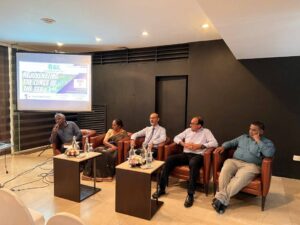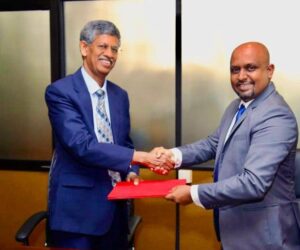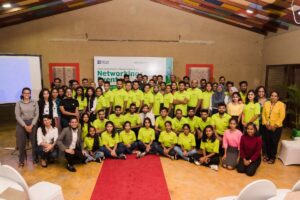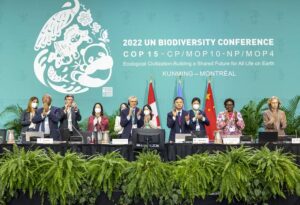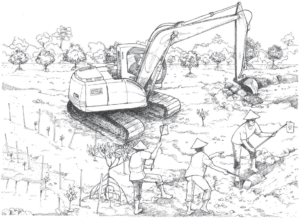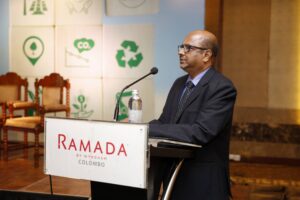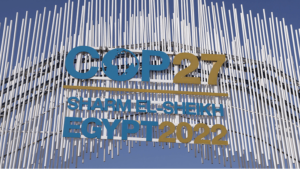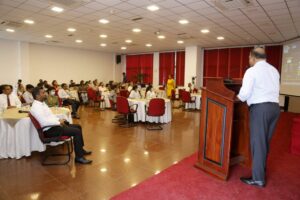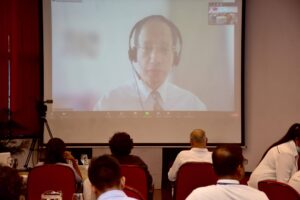More about our flagship project being undertaken jointly with the Department of Wildlife Conservation (DWC), the Wayamba University of Sri Lanka, and selected private sector partners in the Anawilundawa Ramsar wetland sanctuary…
The selected patches have been severely degraded due to intensive shrimp farming projects that took place over a decade ago. The intention is to restore these mangrove patches using established scientific principles, to enhance ecological functions, habitat quality, species diversity, and capacity to provide biodiversity and ecosystem services that are in close approximation to what prevailed before it was converted to the present state.
Hydrology in mangrove restoration is often overlooked
Hydrology is often overlooked in mangrove restoration projects, making it an important reason for failure. One of the reasons that hydrology is often not taken into account is that it is not easy to quantify. To overcome the hydrological challenges of the site, the Department of Wildlife Conservation (DWC) made a request to Sri Lanka Navy (SLN) to undertake a comprehensive hydrological study for each plot. At the end of the study SLN developed contour maps for all plots, providing an analysis of the leveling in comparison with the Mean Sea Level. The contour map is helping to develop plans for irrigating the site, either by lagoon waters or waters from the Dutch Canal. Also, it will help in determining the types of species that could be planted in the different plots and understanding the hydrological patterns controlling the seedling establishment and successful growth of mangrove species.
Based on the SLN study engineers from the Department of Wildlife Conservation have mapped out points and designs to build culverts to obtain water for the plots from the Dutch Canal.
Project Field Coordinator – Dushan Samarasinghe
Maintaining genetic adaptation on-site
Proven studies provide information on the stage mangrove fruits become ready for harvesting. Community knowledge and experience are also taken into consideration in seed collection. The fruits or seeds will be
collected from the periphery of the area around the Dutch canal and sanctuary area with the help of community members, villagers, and fishermen. This is considered important, in terms of maintaining genetic adaptations on-site. Nurseries will be established by the propagation of collected fruits and seeds, and will be based on the lessons learned from the on-going pilot study;
The following species will be planted directly at the site:
- Rhizophora mucronata
- Rhizophora apiculata
- Bruguiera gymnorrhiza
- Bruguiera cylindrica
- Avicennia marina
- Avicennia officinalis
- Aegiceras corniculatum
The following species will be planted in nurseries:
- Xylocarpus granatum
- Lumnitzera racemosa
- Scyphiphora hydrophyllacea
- Nypa fruticans
- Heritiera littoralis
Since BSL’s plot 7 is located at the edge of the Dutch canal it is proposed to plant Rhizophora, Bruguiera, and Xylocorpus as the most preferred species. These species require adequate water availability to survive and grow. The landward plots will be restored with mixed species.
In addition to these, the Project is currently carrying out biodiversity surveys and soil analyses to establish baseline information for the Project.



